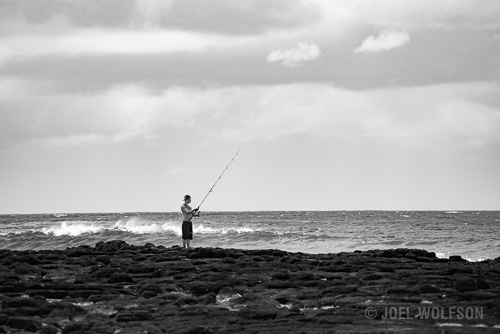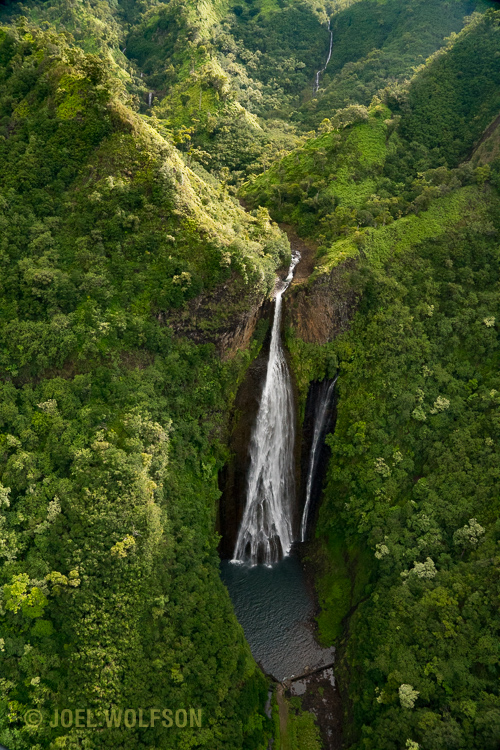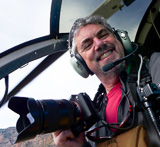Sony A7R II Sealed The Deal
My Preference for Mirrorless over DSLRs

It was a “Wow!” moment. I don’t say it very often when it comes to camera gear- in fact only about once a decade over my 30 year photography career. I had just finished doing an aerial shoot from a helicopter in Kauai. I had an absolute blast doing the shoot. I was a little nervous beforehand wondering how I would like using my new A7R II on a demanding shoot. I was thoroughly familiar with the camera and controls on it (I had been using the nearly identical A7 II for months.) The A7R II ended up handling everything I gave it on the shoot so then it came down to the performance of the camera and how it would translate my vision for the images.
Then I took my first look at the images and said “Wow!” out loud. This has only happened twice before: The last time was looking at 6X7 transparencies from a shoot in Italy and France from my Mamiya 7 II and the first time was looking at Kodachrome slides from my first Leica rangefinder. So that’s my average of about once a decade for a camera to really wow me.

How I arrived at the Wow moment
Due to a hand injury a few years ago I started using Micro 4/3 mirrorless cameras and lenses until my hand was rehabilitated and I could hold and use my much heavier Canon DSLRs again. Micro 4/3 spoiled me as I was able to carry around so much gear that weighed so little. As much as I loved the form factor, light weight and the outstanding optics of that system, at 16 megapixels, it couldn’t meet my requirements for making very large prints.
Large fine art prints are an important part of my business. Although the 21 megapixel sensors in my Canon bodies were usually adequate there were times I wanted higher resolution to have the leeway for cropping and still make very large prints. Enter the Nikon D800E with a 36 Megapixel Sony sensor without a low pass filter. I bought it along with a complement of Nikon lenses. This was not an easy decision having been a die hard Canon user for decades. But much to my disappointment, Canon at that time, was on a path of lowering the resolution of their sensors, presumably for better low light performance, faster frame rates, and their assumption that pros and consumers didn’t want or need higher resolution then their top end of 22 MP. I think they were caught off guard by the number of pros like me that switched to Nikon for the higher resolution. It turned out that Nikon, with Sony’s sensor was able to produce astounding quality with no compromise in dynamic range or low light. I know some people would argue that the 5D Mark III is better in low light than the D800E (later replaced by the D810) but in practical terms, like making prints, it was more of a tie and the obvious advantage of higher resolution on the D800E.

Sony announced their first full frame 36 megapixel camera in the fall of 2013, the A7R, about 8 months after I bought my Nikon system. I read about it with great interest but there weren’t enough of the right lenses available for my use and using adapters for my Nikon lenses (or Canon for that matter), at that time was cumbersome. As innovative as it was, there were naturally a few problems with the A7R being the first of its kind. I followed Sony’s progression knowing it was only a matter of time before I might have the best of both worlds: The compactness of a mirrorless body with the high resolution and low light capabilities of a top notch full frame sensor.
Even after using the Nikon system extensively the cameras never really felt like a natural extension of my hands like my Canons did. I got used to using the Nikon gear and there was a feature or two I liked that my Canon gear didn’t have. However, Canon definitely has much better ergonomics and intuitive controls. Sort of like using a PC after being spoiled by the elegance and intuitive design of a Mac- only without the price difference. But whether I stayed with Nikon or went back to Canon I would have to deal with very large and heavy cameras.

The game changed two years later when Sony started shipping the A7 II. I bought it along with some lenses. Thus began the Sony trial. At 24 megapixel the A7II was a slight downgrade in terms of resolution compared to my Nikon D800E but this was an experiment and my opportunity to try the highly improved second generation Sony A7 series bodies and by now they had some lenses in their line I could use professionally. Sony has always had outstanding optics. Along with their association with Zeiss and their acquisition of Minolta they have a great basis and history for premium optics. I’ve always loved Zeiss lenses and owned several over the years. Now I could use them on a compact full frame mirrorless body.
Naturally there are some things I’d like to see added or changed on this camera but not enough that I want to go back to DSLRs as a main system. The Sony A7R II is really a revolution in digital cameras. I think it’s quite possible that Sony could achieve their 5 year goal of knocking one of the giants, Nikon or Canon out of the top spots.
I’ll be doing more posts about the mirrorless experience with the Sony A7 system.

Happy Shooting Everyone!
Joel Wolfson is an internationally published photographer who loves teaching as much as shooting. He shares his 25+ years of experience as a working pro with other photographers and enthusiasts by way of his workshops, 1 on 1 training, webinars, articles, blog and speaking engagements. His technical articles have been translated for use in more than 30 countries yet he is best known for his artistic images of nature’s fleeting moments and unexpected views of everyday places around the globe. He is one of the pioneers of digital photography having conducted digital photography seminars for Apple and other corporations starting in the early 90s. His roster of notable clients includes numerous publications and fortune 500 companies. He currently works with great affiliates like Topaz Labs and Arizona Highways to have more avenues for working with those wanting to pursue their love of photography. His goal is to make learning and improving one’s photography easy, fun and rewarding.

Hi Joel. It’s been too long. I recently got a Sony alpha 6000 and I’m loving it. (Except for some of the clunky menu choices). Let’s go out and shoot again.
Hey Joel, Thank you for the review. I’ve been wondering about the change in tools. I was expecting this quality in the compact cameras for a while and it looks like they have arrived. I haven’t looked at price, but I am sure it is out of my range. But, if others ask I know what to recommend.
Cheers,
Michael
I have a problem, I have been thinking about going mirroless for awhile. Problem is I have a lot of expense equipment: D810 and several lens that I think I will lose a lot of money. Especially, Since I have had the equipment less than 5 years. Do I hold off or sell? I think I might sell if I knew best way not to lose an arm & a leg!
Hi Vicki, Yes this is always a problem when switching systems. I lost money on the Nikon gear I sold. Canon is less of a problem than Nikon because many lenses work well via an adapter. There are adapters for Nikon too but you don’t retain autofocus. I heard there were some new Nikon adapters in the pipeline so you might want to research it. My personal feeling is that adapters are just a stop gap for a slower transition. You lose some of the advantages of mirrorless (or almost any new system) when adapting lenses. I wish I had a definitive answer for you but it is just a matter of your own personal situation.